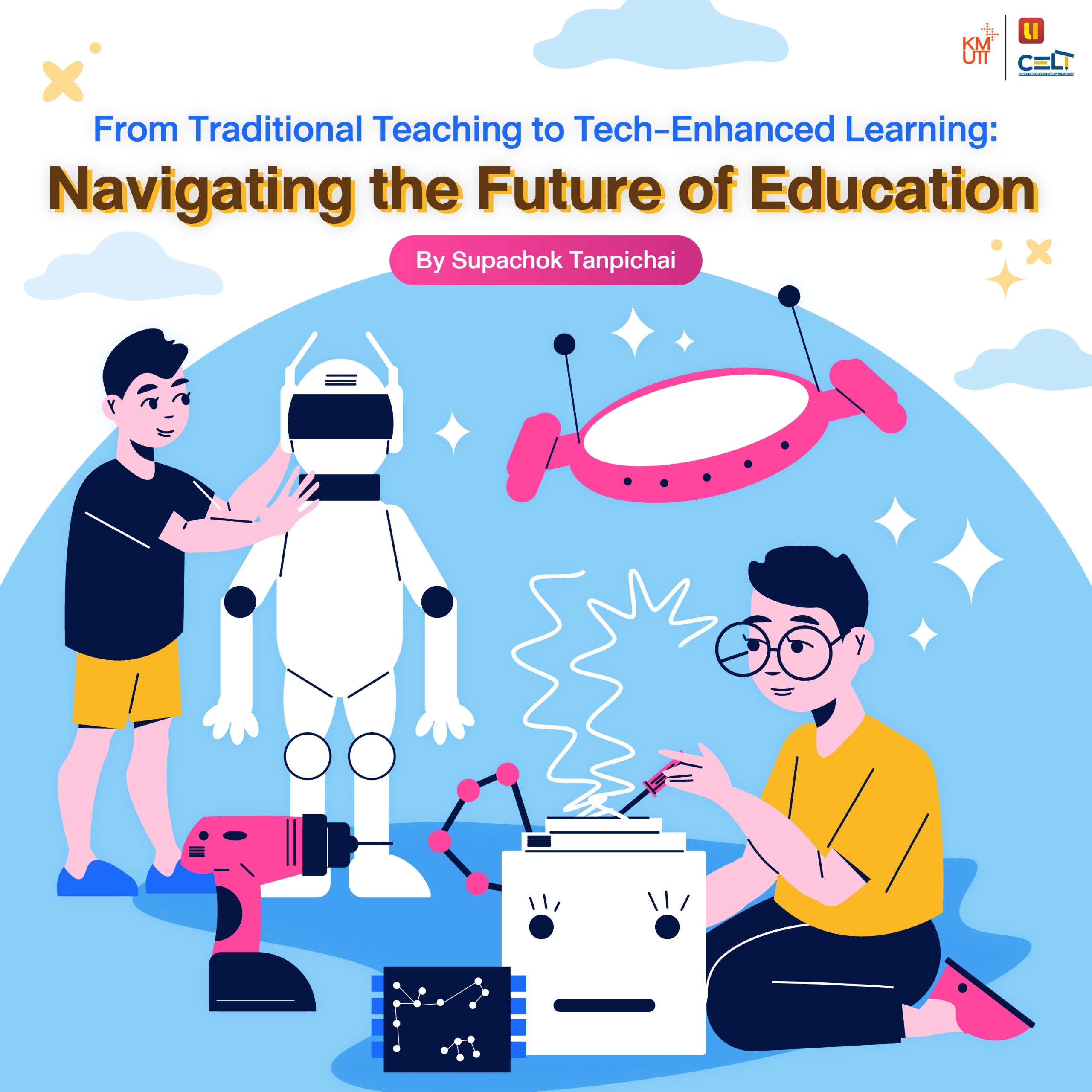By Supachok Tanpichai
The landscape of education is rapidly changing, as technology continues to transform the way we teach and learn. Traditionally, education has been focused on the teacher being the source of knowledge and students passively receiving information. However, with the advent of new technologies such as AI, machine learning, and big data, the focus is shifting towards a more personalized and interactive learning experience.
This shift requires a new approach to teaching and learning, where educators must learn to navigate the complexities of incorporating technology into the classroom. It involves using AI to support student learning, facilitating collaboration, and fostering critical thinking skills.
One of the key advantages of AI in education is its ability to personalize learning for individual students. By analyzing large amounts of data, AI can identify students’ strengths and weaknesses and provide tailored recommendations for further learning. This personalized approach has been shown to be effective in improving student engagement and learning outcomes.
AI can also be used to support collaboration among students. By creating virtual spaces for collaboration, students can work together on projects and assignments, regardless of their physical location. This approach not only promotes teamwork but also helps students develop valuable digital communication skills that will be important for their future careers.
In addition to these benefits, AI can also help students develop critical thinking skills. By providing opportunities for problem-solving and decision-making, AI can help students develop the ability to analyze information and think creatively. This is particularly important in a world where the ability to solve complex problems is becoming increasingly valuable.
However, incorporating technology into the classroom also poses challenges for educators. One of the key challenges is ensuring that students are not simply memorizing information but are developing the critical thinking and problem-solving skills they will need in their future careers. Educators must also ensure that technology is being used in an ethical and responsible manner, and that student data is being protected.
To navigate these challenges, educators must embrace technology and adapt to the changing landscape of education. This involves developing new teaching strategies, incorporating AI and other technologies into the curriculum, and promoting lifelong learning for both students and educators.
In conclusion, “From Traditional Teaching to Tech-Enhanced Learning: Navigating the Future of Education” highlights the need for educators to embrace technology and prepare for the changing landscape of education. By using AI to personalize learning, support collaboration, and foster critical thinking skills, educators can create a more engaging and effective learning environment for students.
However, this shift also requires educators to navigate the challenges of incorporating technology into the classroom, and to ensure that students are developing the skills they will need in their future careers.
